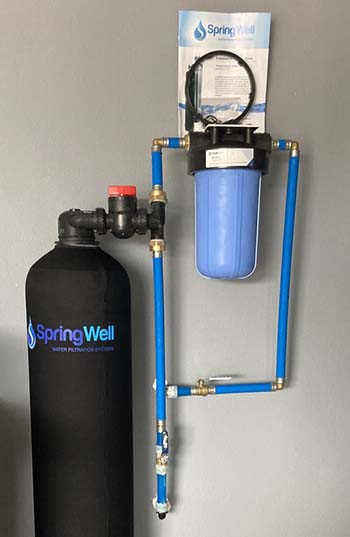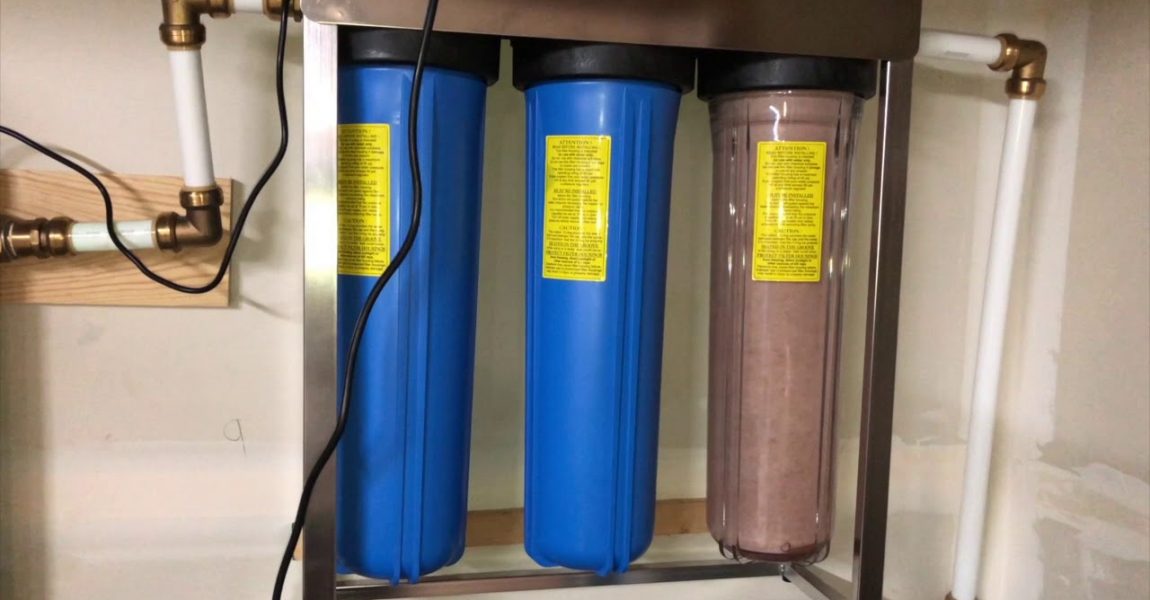What are your opinions on What are the Benefits of Using a Whole House Water?

Entire home water filters are the ideal alternative for people that have an interest in having a home that offers tidy, drinkable water. Along with supplying quality drinking water throughout your home, an entire home water filter additionally provides benefits such as getting rid of impurities that trigger detecting in water that is used to wash recipes. Unfiltered water can also trigger trouble such as corroding plumbing as well as devices, destroying garments that is cleaned and discolor sinks or showers. Although entire house water filters are normally utilized in property residences, they can also be an efficient alternative for homes or workplaces.
At first, it may seem that entire residence water filters would be extremely expensive when compared to various other filter alternatives, yet they are actually a very economical choice for water purification. The rate series of these water filters is large, starting at two hundred dollars as well as setting you back as high as one thousand bucks. The price of the filters is dependent upon their size, material as well as life expectancy. This might feel like an exceptionally high rate, yet when compared to various other filter alternatives, it is actually very cost effective because of the amount of filtering system that it gives.
Entire residence water filters purify water in the same fashion that other filters, such as countertop or under sink filters, do. The difference is that it requires just one filter, which is attached to the main water resource, as opposed to requiring numerous water filters to be affixed to various tools. Similar to the various other filters, entire home water filters cleanse tap water by forcing it through several different phases of purification. Among the stages is carbon purification. Carbon is an efficient technique of filtering water since it is porous and has the ability to get rid of tiny as well as big pollutants. Carbon is vital in removing volatile natural carbon substances, which in many cases can cause significant damages to the liver, kidney or main nerve system. Carbon also removes unsafe compounds such as pesticides, industrial solvents and also pesticides.
One more important step of the purification procedure involves a process such as ionization or micron purification. This action removes thousands of impurities discovered in tap water, and also changes the water to fantastic sampling, healthy and balanced drinking water. As mentioned previously, the primary advantage of entire home water filters are that they provide filtered water throughout your house with making use of just one filter.
Another benefit of entire house water filters is the lengthy life expectancy that they offer. Much of these filters last between fifty and also one hundred thousand gallons of water. For lots of, the main negative aspect of whole house filters is the more than average rate. Although these filters are extremely cost effective, they do need a huge investment up front. Entire house water filters can also need a significant quantity work to mount.
How to Remove Iron Bacteria from Well Water
If your drinking water comes from a private well, you will likely experience issues with iron in your water. These issues can range from poor-tasting coffee to bright orange streaks in toilets and bathtubs. However, there’s an equally familiar but less understood problem linked to iron contamination: iron bacteria, also known as “iron-eating” or “iron-oxidizing” bacteria.
Iron is one of the most abundant minerals in the earth’s crust. As a result, elevated levels of iron are usually widespread in the groundwater that serves wells, often fostering the growth of iron bacteria in well water. These organisms can combine oxygen with iron, manganese, or other nutrients in the water to form a swampy sludge containing rust deposits, bacterial cells, and other organic and inorganic matter. This slimy residue then sticks the bacteria to pipes, pumps, plumbing fixtures, and appliances, causing clogging, foul tastes and odors, corroded pipes and plumbing fixtures, etc.
Well-water systems used infrequently or intermittently are typically more prone to iron bacteria problems. To make matters worse, removing these organisms from your water can be complicated, which is why we recommend taking steps to prevent them from forming in your well in the first place. Luckily, this article explains a highly effective way to remove iron bacteria from well water. Let’s start by discussing what iron bacteria are and how they get into well water.
Signs of Iron Bacteria in Water
If your household water supply is contaminated with iron bacteria, you might notice several unappealing signs that may indicate iron bacteria presence. These signs may include:
Stains and deposits on plumbing fixtures, pipes, and appliances
One of the most common indicators of iron bacteria in well water is stains and deposits on plumbing fixtures, pipes, and appliances. Water containing these organisms will leave rust-colored slime stains and deposits in sinks and toilets and inside well casings. You’ll also notice stains on fixtures, tableware, laundry, and various surfaces, that keep coming back no matter your cleaning method or efforts. These stains can be grey, yellow, or brown but are often a reddish-orange rust-like color.
Discoloration
Water containing iron bacteria can have a yellow, red, or orange hue. Further, visible deposits that have a clumpy or slimy consistency are very likely to have been caused by the presence of iron bacteria. Iron bacteria deposits are widespread in toilet tanks. In many cases, the deposits will take the form of a slimy coating along the walls of the tank. If the bacteria have been in the water for a lengthy period, the deposits could float in the water.
Oily sheen on the water surface
A quick and easy way to check for the presence of iron and other slimy-producing bacteria is to look in the water closet tank of your toilet. If you see an oily sheen on the surface of the water and can feel a slimy residue on the inside of the tank, slime-producing bacteria are likely present in your water system. If you use disinfectant in your tank, evidence of these conditions might not be so apparent.
https://www.springwellwater.com/how-to-remove-iron-bacteria-from-well-water/

I'm just very focused on Everything You Need to Know About Whole House Water Filter and I really hope you enjoyed reading the new post. Liked our write up? Please share it. Let somebody else find it. We recognize the value of reading our article about Whole House Water Filtration.
Book Your Appointment